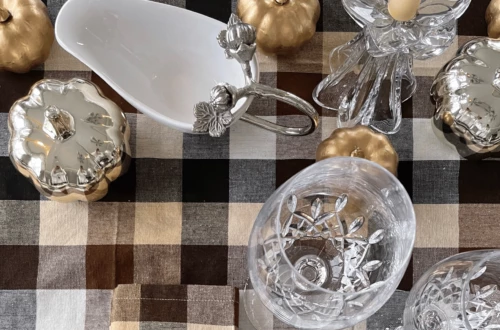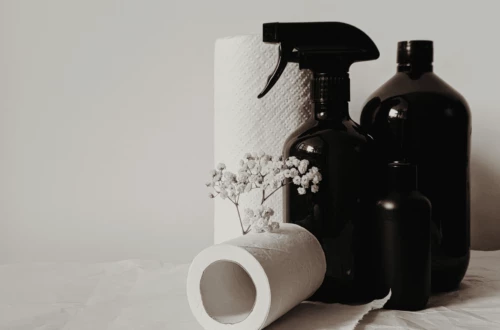The Best Kept Hydrangea Secrets

If we’re being completely honest then I’d have to tell you that I hate hydrangea’s, but I do realize that many people have an affinity for them. Fresh cut hydrangeas are an easy way to bring the outdoors in and welcome spring. They are also one of the most popular gifts to give and receive on Easter. However, they have a reputation for being fussy, both when they are potted and fresh cut. After working in a garden centre for the better part of 7 years and also a short stint as a professional florist, I can honestly say I’ve picked up a trick or two that will help you extend the lives of these beautiful florals while you welcome spring into your home.
A word to the wise: as mentioned above, hydrangeas are a dangerously fussy plant that can be very high maintenance in terms of care. They can be known for wilting the day after you purchase them if you don’t employ proper techniques, and even when you do they sometimes wilt anyways. Nonetheless, this post is all about the best kept secrets and proper care of hydrangeas both potted and fresh cut.
HOW TO CARE FOR HYDRANGEAS
Fresh Cut Hydrangeas
If you’ve been wondering how do you make hydrangea last in a vase? You’ve come to the right place. Although these aren’t my flowers to decorate my space with, they are much too fussy if you ask me, I’ll pass along my best tricks of the trade to help you on your quest to decorate with these beauties. Below you’ll find answers to common questions such as how to choose fresh cut hydrangea, how long do cut hydrangeas last, and how to care for fresh cut hydrangeas.
Choosing a bouquet
If you’re choosing the hydrangeas yourself, rather than being gifted a bouquet, be sure to look for the following:
- Flower heads should feel firm and be free of signs of damage, such as dark spots on petals
- Stay clear of very soft and spongy flower heads which indicates they are already in full bloom
If you choose wisely, and follow instructions for proper care, your bouquet can last upwards of 7-10 days.
Prepping your flowers
When prepping your flowers to make a vase arrangement there are a few things to keep in mind:
- Remove leaves: You’ll want to strip the stems of as many leaves as possible as they suck up most of the water leaving less for your beautiful blooms.
- Trim the ends by using a sharp pruner and cutting upwards on a diagonal.
- Make a 1/2 – 1 inch cut upwards from the bottom of the stem. Think of this as splitting the bottom of the stem in half. This exposes more of the stem allowing for more water intake.
- Hydrangeas produce a sap at the bottom of their stems when cut, and this needs to be sealed in order for water absorption. To seal the bottoms you can dip the stems into a spice called alum that can be bought at most local groceries stores. Alternatively, you can dip the stems into boiling waters for 8-10 seconds for the same effect.
Water
The water in your vase should be changed on a daily basis. Be sure to also clean your vase by washing with soap and water and rinsing well. This should be done every time you change the water. If some of your blooms start to wilt and look as if they’re dying, don’t throw them out just yet. Hydrangeas LOVE water and can even soak up water through their petals so I’ll leave a florists trick below.
HOW TO REVIVE HYDRANGEA PLANT:
Trim your and prep your stems once more as if you had just got your flowers. Fill a deep bowl or bucket with cold water, and place your hydrangeas upside down in water. Let them soak for 5+ hours, or even overnight. The petals can absorb water, and this can extend the life of your blooms for days.
Potted Indoor Hydrangeas
Light
Hydrangeas have a reputation for being a shade loving plant, but the truth is they need lots of bright, indirect light. The key-word of that sentence being ‘indirect’. Be careful not to place them in direct light otherwise you may find that the leaves will begin to burn. Picture: beautiful large green hydrangea leaves with dry brown edges.
Water
Most indoor potted hydrangeas will come in a plastic pot with drainage holes. This is perfect! You want a pot with drainage to allow the soil to drain after watering. If plastic pots don’t go over well with your home decor aesthetic, and I really can’t blame you there, consider placing the plastic pot into a more decorative vessel. If you choose to do this, be sure to check for excess water and drain. Hydrangeas love water, especially when they are in bloom which is when they will require more. To check moisture levels I’d recommend sticking your finger into the soil to determine how wet or dry it feels (at least 2 inches). Sometimes the appearance of the soil can be deceiving so it’s best always to test the levels underneath that the eye can’t see. After the plant finishes blooming if you’re daring enough to keep the plant, know that it will require less water while it is not in bloom. In most cases though, people will toss out the hydrangea they received as a gift as soon as the blooms brown.
SHOP VASES & FLORAL ACCESSORIES

You May Also Like

Easy Ways to Decorate Your Home with Fall Decor
2 September 2022
Everything You Need for the Best Thanksgiving Table Decor
24 September 2022